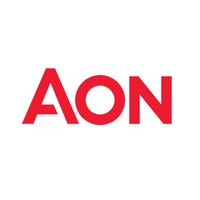The importance of communication: top tips for disseminating performance and reward decisions

Aon Employee Benefits will be speaking and exhibiting at the virtual Employee Wellbeing Congress in September. Learn more about the Congress and register to attend.
Clear structure
A clear structure can help employees understand the performance roadmap. Creating a compensation framework which corresponds with performance reviews can help employees understand the outcome of their review. It can also help set expectations around pay reviews; if it is common knowledge that compensation is only reviewed annually, this can prevent employees from feeling overlooked.
Convey fairness
Issues can arise when employees do not believe a rewards programme is fair. A clear structure, transparency on requirements and open sessions on the organisation’s reward philosophy can help convey how fair your compensation scheme is. Shrouding the scheme in secrecy will build suspicion that it doesn’t operate or remunerate fairly.
Be transparent
It’s not always good news. However, it’s not often that bad news comes as a surprise to a business. Being as transparent as possible ahead of delivering a final decision, and providing appropriate context, will help employees understand why certain actions have been taken. If it’s a decision which impacts a wider group of employees, honesty and transparency provide reassurance that the business is taking proactive steps early.
Present the total value
Communicating the total value of an employee’s compensation package can help demonstrate the full value of pay and benefits – one way of doing this is through Total Reward Statements (TRS). These can be designed to include workplace culture, non-typical benefits and wellbeing measures, which are perks that may not have an explicit monetary value. These statements can help increase awareness, boost appreciation and help support reward conversations. TRS can be highly visual, utilise company branding and help embed what’s available from the ‘employer/employee deal’ for employees.
Frame the messaging
How you communicate is often just as important as what you’re communicating. It’s important for businesses to consider the terminology of the messaging – make sure it’s clear and with a positive tone, but also easy to understand. Creating an employee benefits brand will help your messaging stand out against other corporate communications, whereas technology can help simplify and showcase.
Expert training
Invariably, those communicating with individuals about their compensation package will be people managers. In order to effectively communicate decisions, people managers need to be confident that they can handle any potentially challenging conversations. Training and support ahead of performance reviews and compensation announcements will help prepare them – this is especially important if the business knows there may be challenging news to deliver.
Review engagement
Surveys and focus groups can help businesses understand what employees think of the performance and reward programme at their organisation. This insight can provide useful information which can then be built upon – whether employees think the pay grades are unclear, or that reward is granted arbitrarily. Your strategy can then be amended based on employee feedback.
However you communicate, it’s important to make sure that you do communicate. We often find that employees are not aware of the full benefits package available to them – and this is usually due to poor communication.
This article is provided by Aon.







